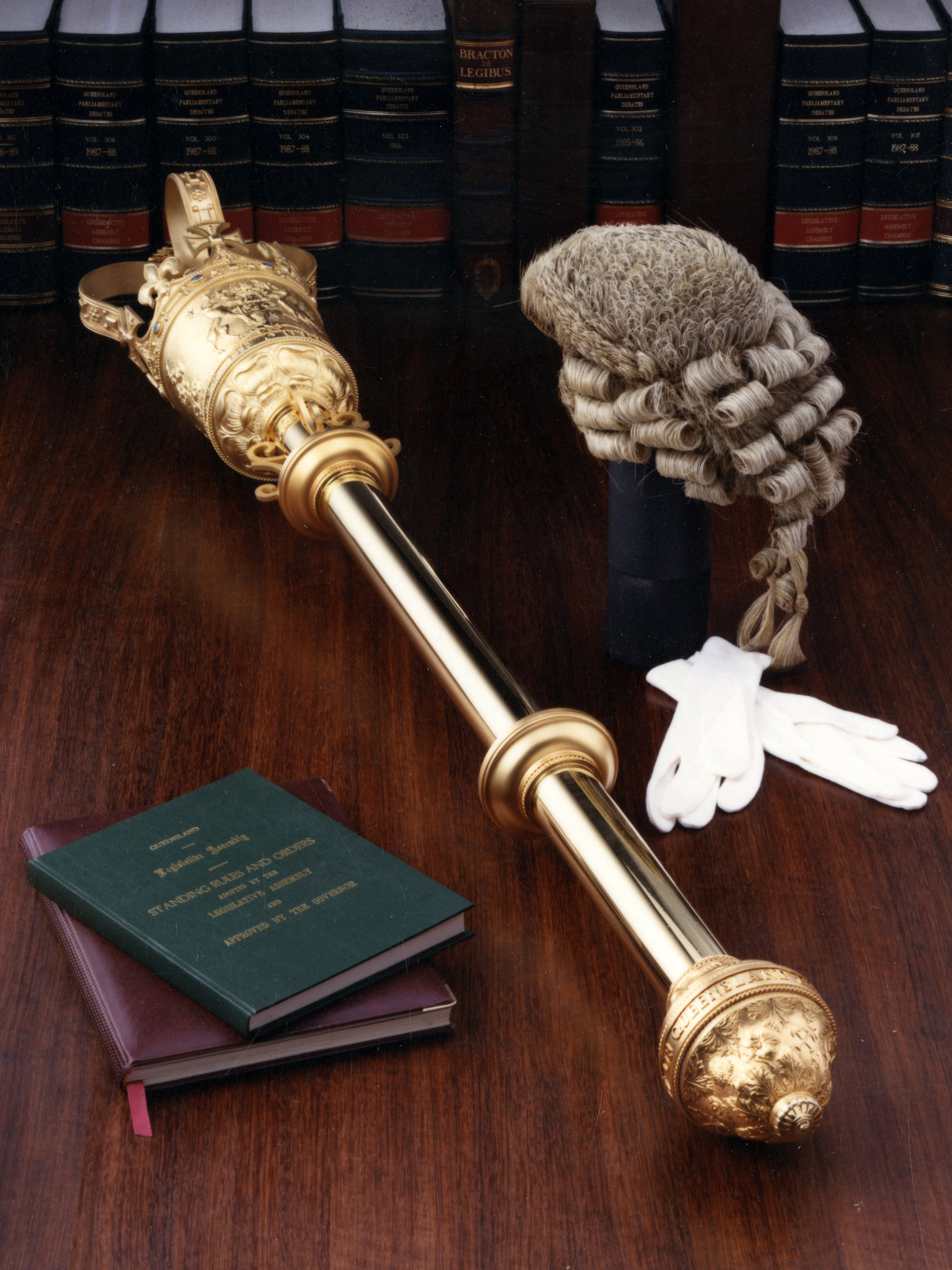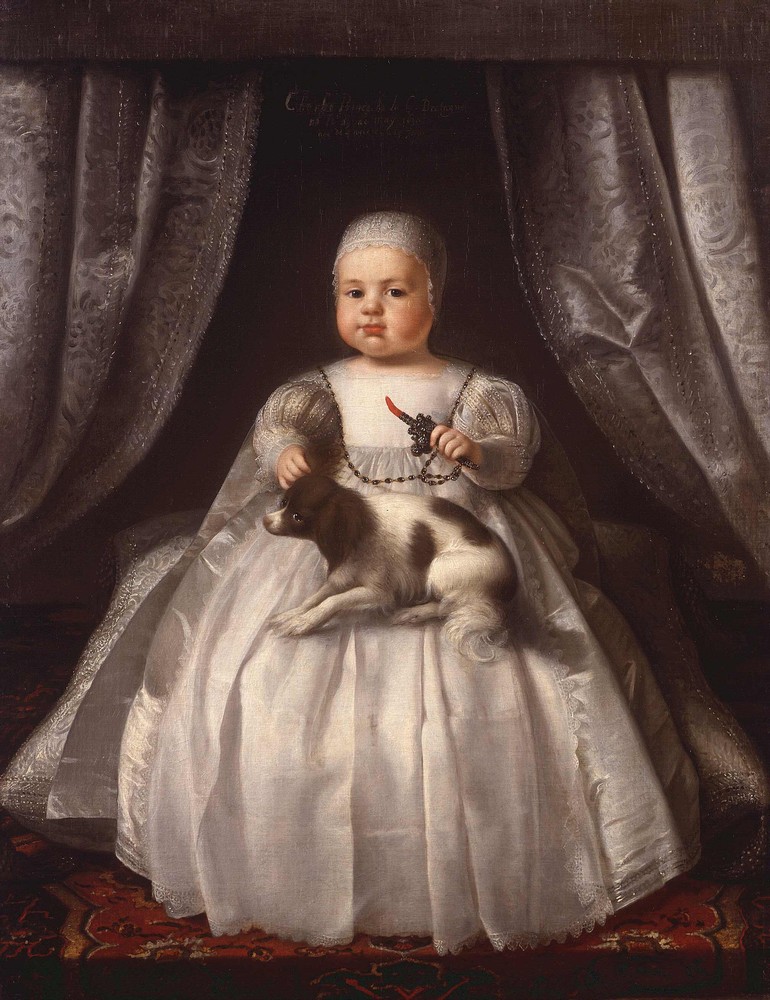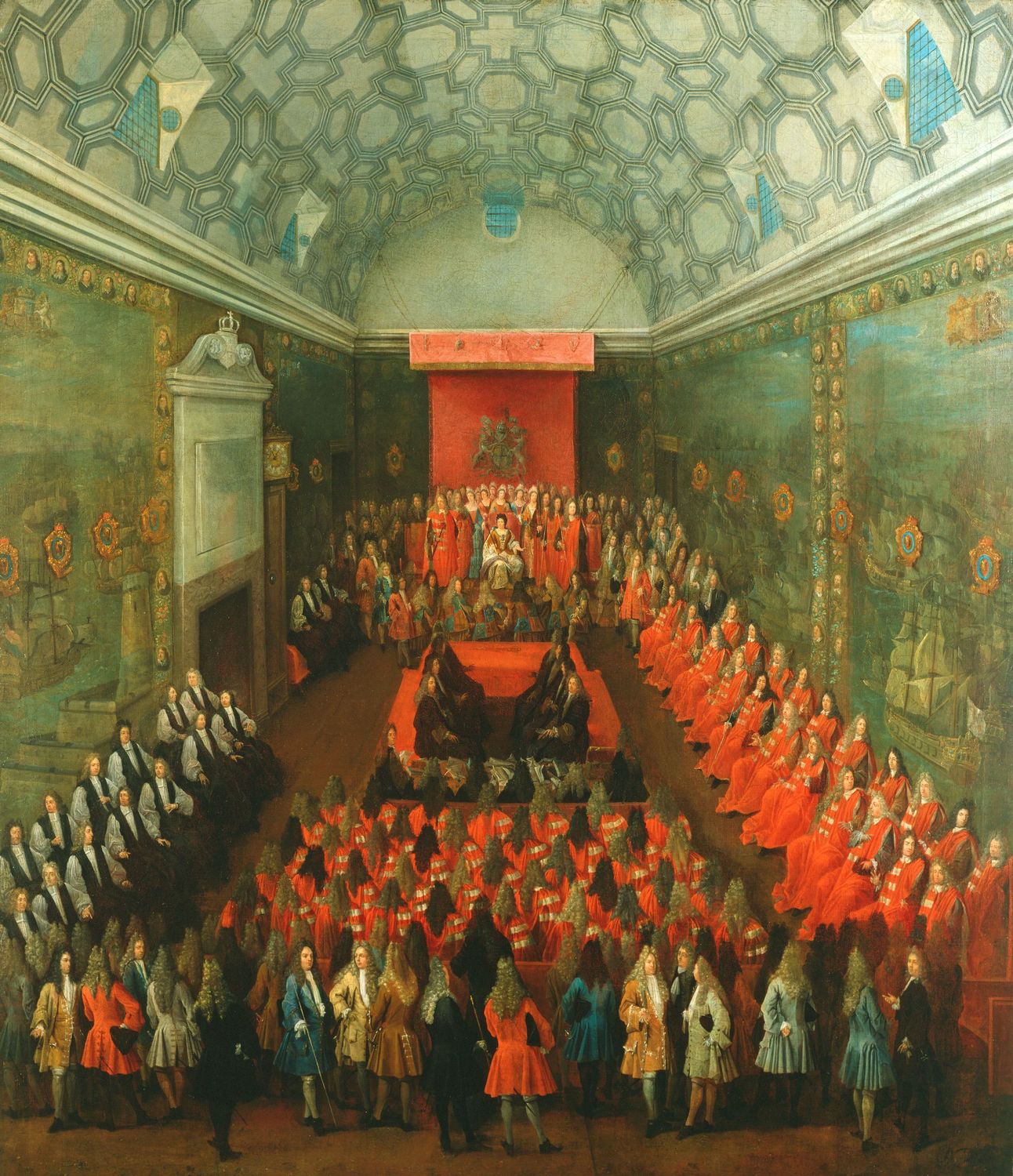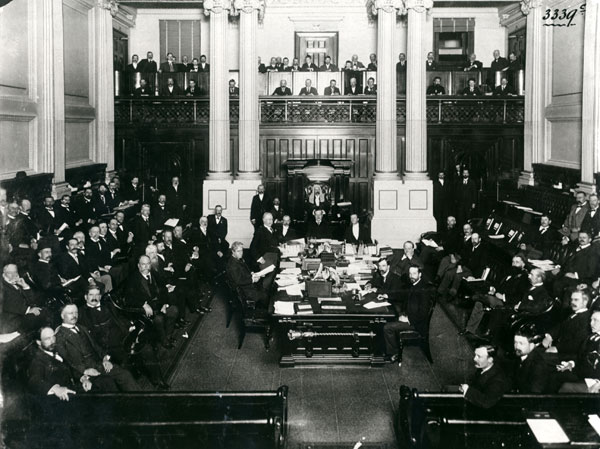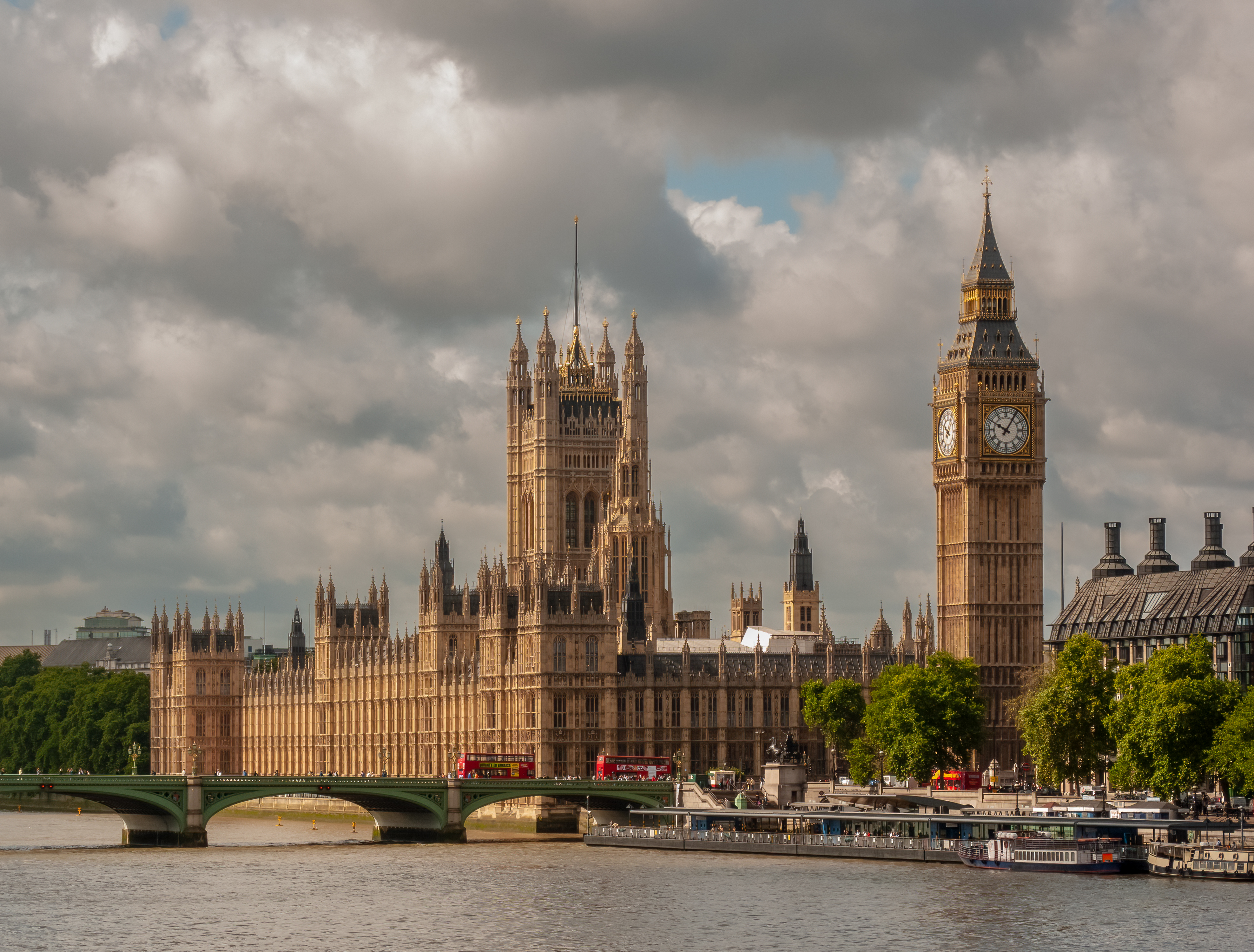|
Serjeant-at-Arms
A serjeant-at-arms or sergeant-at-arms is an officer appointed by a deliberative body, usually a legislature, to keep order during its meetings. The word "serjeant" is derived from the Latin , which means "servant". Historically, serjeants-at-arms were armed men retained by English lords and English monarchy, monarchs, and the ceremonial maces which they are associated with were originally a Mace (bludgeon), type of weapon. Origins The term "sergeant" can be given two main definitions: the first is a Sergeant, military rank; the other is a governmental role. Whereas technically the two roles were not mutually exclusive, they were very different in roles and duties. The soldier sergeant was a man of what would now be thought of as the 'middle class', fulfilling a junior role to the knight in the medieval hierarchy. Sergeants could fight either as heavy to light cavalry, or as well-trained professional infantry, either spearmen or Arbalist (crossbowman), crossbowmen. Most notable m ... [...More Info...] [...Related Items...] OR: [Wikipedia] [Google] [Baidu] |
Sergeant
Sergeant (Sgt) is a Military rank, rank in use by the armed forces of many countries. It is also a police rank in some police services. The alternative spelling, ''serjeant'', is used in The Rifles and in other units that draw their heritage from the British light infantry. The word "sergeant" derives from the Latin , 'one who serves', through the Old French term . In modern hierarchies the term ''sergeant'' refers to a non-commissioned officer positioned above the rank of a corporal, and to a police officer immediately below a lieutenant in the US, and below an inspector in the UK. In most armies, the rank of sergeant corresponds to command of a team/section (military unit), section, or squad. In Commonwealth of Nations, Commonwealth armies, it is a more senior rank, corresponding roughly to a platoon second-in-command. In the United States Army, sergeant is a more junior rank corresponding to a fireteam leader or assistant squad-leader; while in the United States Marine Corps ... [...More Info...] [...Related Items...] OR: [Wikipedia] [Google] [Baidu] |
Ceremonial Mace
A ceremonial mace is a highly ornamented staff of metal or wood, carried before a Head of state, sovereign or other high officials in civic ceremonies by a mace-bearer, intended to represent the official's authority. The mace, as used today, derives from the original mace (bludgeon), mace used as a weapon. Processions often feature maces, as on parliamentary or formal academic occasions. History Ancient Near East Ceremonial maces originated in the Ancient Near East, where they were used as symbols of rank and authority across the region during the late Stone Age, Bronze Age, and early Iron Age. Among the oldest known ceremonial maceheads are the Ancient Egyptian Scorpion Macehead and Narmer Macehead; both are elaborately engraved with royal scenes, although their precise role and symbolism are obscure. In later Mesopotamian art, the mace is more clearly associated with authority; by the First Babylonian dynasty, Old Babylonian period the most common figure on cylinder seals ... [...More Info...] [...Related Items...] OR: [Wikipedia] [Google] [Baidu] |
British House Of Commons
The House of Commons is the lower house of the Parliament of the United Kingdom. Like the upper house, the House of Lords, it meets in the Palace of Westminster in London, England. The House of Commons is an elected body consisting of 650 members known as members of Parliament (MPs), who are elected to represent constituencies by the first-past-the-post system and hold their seats until Parliament is dissolved. The House of Commons of England began to evolve in the 13th and 14th centuries. In 1707 it became the House of Commons of Great Britain after the political union with Scotland, and from 1801 it also became the House of Commons for Ireland after the political union of Great Britain and Ireland. In 1922, the body became the House of Commons of the United Kingdom of Great Britain and Northern Ireland after the independence of the Irish Free State. Under the Parliament Acts 1911 and 1949, the Lords' power to reject legislation was reduced to a delaying power. The gove ... [...More Info...] [...Related Items...] OR: [Wikipedia] [Google] [Baidu] |
Bailiff
A bailiff is a manager, overseer or custodian – a legal officer to whom some degree of authority or jurisdiction is given. There are different kinds, and their offices and scope of duties vary. Another official sometimes referred to as a ''bailiff'' was the '' Vogt''. In the Holy Roman Empire a similar function was performed by the '' Amtmann''. They are mostly known for being the officer that keeps the order in a court of law and who also administers oaths to people who participate in court proceedings. Britain and Ireland Historic bailiffs ''Bailiff'' was the term used by the Normans for what the Saxons had called a '' reeve'': the officer responsible for executing the decisions of a court. The duty of the bailiff would thus include serving summonses and orders, and executing all warrants issued out of the corresponding court. The district within which the bailiff operated was called his '' bailiwick'', and is even to the present day. Bailiffs were outsiders and free me ... [...More Info...] [...Related Items...] OR: [Wikipedia] [Google] [Baidu] |
Ceremonial Mace
A ceremonial mace is a highly ornamented staff of metal or wood, carried before a Head of state, sovereign or other high officials in civic ceremonies by a mace-bearer, intended to represent the official's authority. The mace, as used today, derives from the original mace (bludgeon), mace used as a weapon. Processions often feature maces, as on parliamentary or formal academic occasions. History Ancient Near East Ceremonial maces originated in the Ancient Near East, where they were used as symbols of rank and authority across the region during the late Stone Age, Bronze Age, and early Iron Age. Among the oldest known ceremonial maceheads are the Ancient Egyptian Scorpion Macehead and Narmer Macehead; both are elaborately engraved with royal scenes, although their precise role and symbolism are obscure. In later Mesopotamian art, the mace is more clearly associated with authority; by the First Babylonian dynasty, Old Babylonian period the most common figure on cylinder seals ... [...More Info...] [...Related Items...] OR: [Wikipedia] [Google] [Baidu] |
Charles II Of England
Charles II (29 May 1630 – 6 February 1685) was King of Scotland from 1649 until 1651 and King of England, Scotland, and King of Ireland, Ireland from the 1660 Restoration of the monarchy until his death in 1685. Charles II was the eldest surviving child of Charles I of England, Scotland and Ireland and Henrietta Maria of France. After Charles I's execution at Palace of Whitehall, Whitehall on 30 January 1649, at the climax of the English Civil War, the Parliament of Scotland proclaimed Charles II king on 5 February 1649. However, England entered the period known as the English Interregnum or the English Commonwealth with a republican government eventually led by Oliver Cromwell. Cromwell defeated Charles II at the Battle of Worcester on 3 September 1651, and Charles Escape of Charles II, fled to mainland Europe. Cromwell became Lord Protector of England, Scotland and Ireland. Charles spent the next nine years in exile in France, the Dutch Republic and the Spanish Netherlands. ... [...More Info...] [...Related Items...] OR: [Wikipedia] [Google] [Baidu] |
House Of Lords
The House of Lords is the upper house of the Parliament of the United Kingdom. Like the lower house, the House of Commons of the United Kingdom, House of Commons, it meets in the Palace of Westminster in London, England. One of the oldest extant institutions in the world, its origins lie in the early 11th century and the emergence of bicameralism in the 13th century. In contrast to the House of Commons, membership of the Lords is not generally acquired by Elections in the United Kingdom, election. Most members are Life peer, appointed for life, on either a political or non-political basis. House of Lords Act 1999, Hereditary membership was limited in 1999 to 92 List of excepted hereditary peers, excepted hereditary peers: 90 elected through By-elections to the House of Lords, internal by-elections, plus the Earl Marshal and Lord Great Chamberlain as members Ex officio member, ''ex officio''. No members directly inherit their seats any longer. The House of Lords also includes ... [...More Info...] [...Related Items...] OR: [Wikipedia] [Google] [Baidu] |
Australian House Of Representatives
The House of Representatives is the lower house of the bicameralism, bicameral Parliament of Australia, the upper house being the Australian Senate, Senate. Its composition and powers are set out in Chapter I of the Constitution of Australia. The term of members of the House of Representatives is a maximum of three years from the date of the first sitting of the House, but on only 1910 Australian federal election, one occasion since Federation has the maximum term been reached. The House is almost always dissolved earlier, usually alone but sometimes in a double dissolution alongside the whole Senate. Elections for members of the House of Representatives have always been held in conjunction with those for the Senate since the 1970s. A member of the House may be referred to as a "Member of Parliament" ("MP" or "Member"), while a member of the Senate is usually referred to as a "senator". Under the conventions of the Westminster system, the Australian Government, government of ... [...More Info...] [...Related Items...] OR: [Wikipedia] [Google] [Baidu] |
Westminster System
The Westminster system, or Westminster model, is a type of parliamentary system, parliamentary government that incorporates a series of Parliamentary procedure, procedures for operating a legislature, first developed in England. Key aspects of the system include an executive branch made up of members of the legislature which is responsible government, responsible to the legislature; the presence of parliamentary opposition parties; and a ceremonial head of state who is separate from the head of government. The term derives from the Palace of Westminster, which has been the seat of the Parliament of the United Kingdom, Westminster Parliament in England and later the United Kingdom since the 13th century. The Westminster system is often contrasted with the presidential system that originated in the United States, or with the semi-presidential system, based on the government of France. The Westminster system is used, or was once used, in the national and Administrative division, su ... [...More Info...] [...Related Items...] OR: [Wikipedia] [Google] [Baidu] |
Mace UK
Mace may refer to: Spices * Mace (spice), a spice derived from the aril of nutmeg * '' Achillea ageratum'', known as English mace, a flowering plant once used as a herb Weapons * Mace (bludgeon), a weapon with a heavy head on a solid shaft used to bludgeon opponents ** Flail (weapon), a spiked weapon on a chain, sometimes called a chain mace or mace-and-chain ** Ceremonial mace, an ornamented mace used in civic ceremonies ** Gada (mace), the blunt mace or club from India *** Kaumodaki, the gada (mace) of the Hindu god Vishnu * Mace (spray), a brand of tear gas, often used by police * MGM-13 Mace, a U.S. tactical surface-to-surface missile * Multi-mission Affordable Capacity Effector, a U.S. air-launched cruise missile Science and technology * Major adverse cardiovascular events, a criterion for evaluating cardiovascular disease treatments such as angioplasty * Malone antegrade continence enema, a surgical procedure used to create a continent pathway proximal to the anus * Ma ... [...More Info...] [...Related Items...] OR: [Wikipedia] [Google] [Baidu] |
Edward I Of England
Edward I (17/18 June 1239 – 7 July 1307), also known as Edward Longshanks and the Hammer of the Scots (Latin: Malleus Scotorum), was King of England from 1272 to 1307. Concurrently, he was Lord of Ireland, and from 1254 to 1306 ruled Duchy of Gascony, Gascony as Duke of Aquitaine in his capacity as a vassal of the French king. Before his accession to the throne, he was commonly referred to as the Lord Edward. The eldest son of Henry III of England, Henry III, Edward was involved from an early age in the political intrigues of his father's reign. In 1259, he briefly sided with a baronial reform movement, supporting the Provisions of Oxford. After reconciling with his father, he remained loyal throughout the subsequent armed conflict, known as the Second Barons' War. After the Battle of Lewes, Edward was held hostage by the rebellious barons, but escaped after a few months and defeated the baronial leader Simon de Montfort at the Battle of Evesham in 1 ... [...More Info...] [...Related Items...] OR: [Wikipedia] [Google] [Baidu] |
Jatiyo Sangshad
The Jatiya Sangsad (), often simply referred to as Sangsad and also known as is the unicameral legislative body of Bangladesh. The current parliament of Bangladesh contains 350 seats, including 50 seats reserved exclusively for women. Elected occupants are called members of Parliament, or MPs. The 12th national parliamentary election was held on 7 January 2024. Elections to the body are held every five years, unless a parliament is dissolved earlier by the President of Bangladesh. On 6 August 2024, President Mohammed Shahabuddin dissolved parliament after the resignation of Sheikh Hasina and ordered to form an interim government. The leader of the party (or alliance of parties) holding the majority of seats becomes the Prime Minister of Bangladesh, and so the head of the government. The President of Bangladesh, the ceremonial head of state, is chosen by Parliament. Since the December 2008 national election, the majority party has been the Awami League, led by Prime Mi ... [...More Info...] [...Related Items...] OR: [Wikipedia] [Google] [Baidu] |

